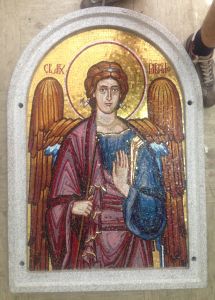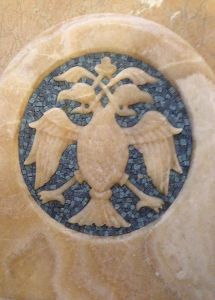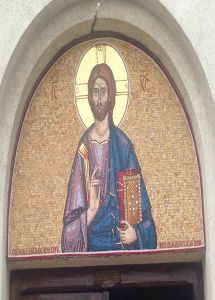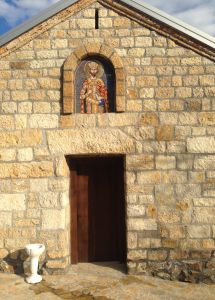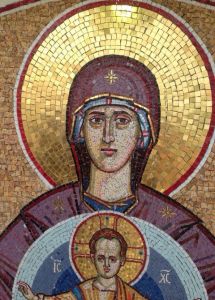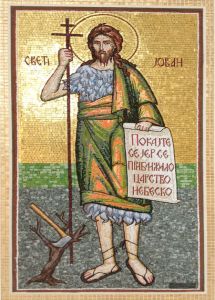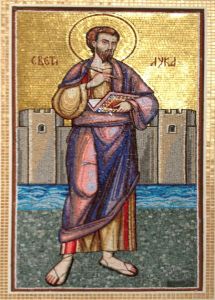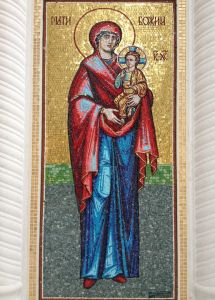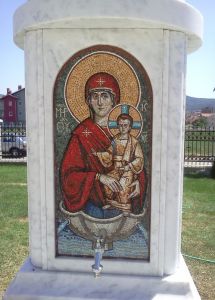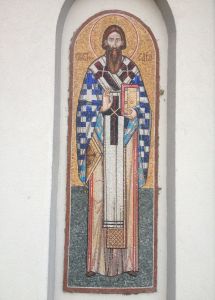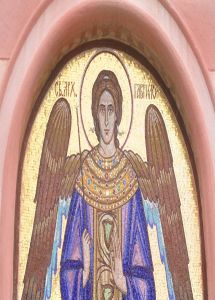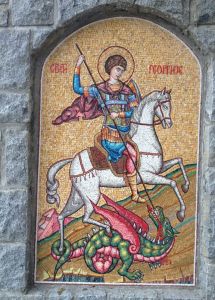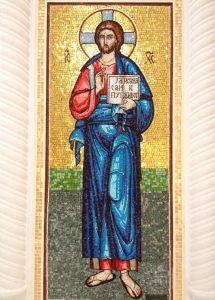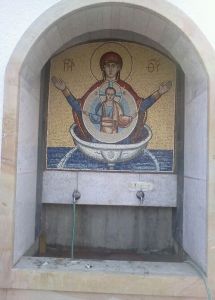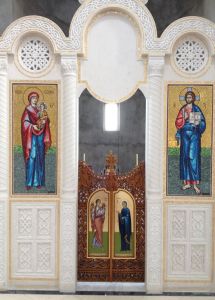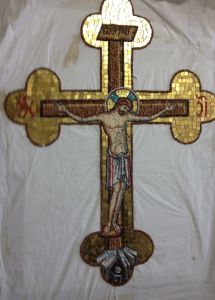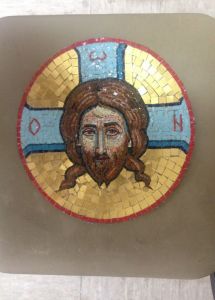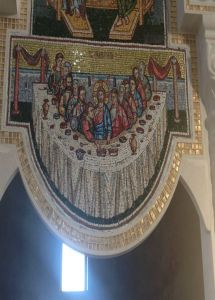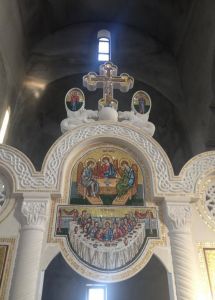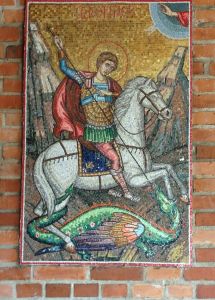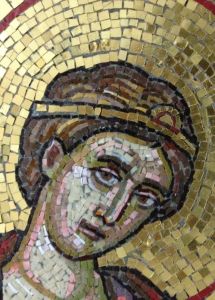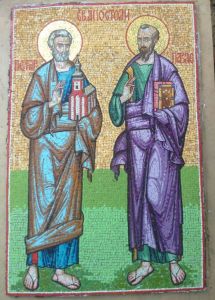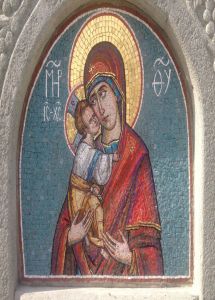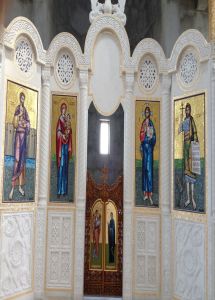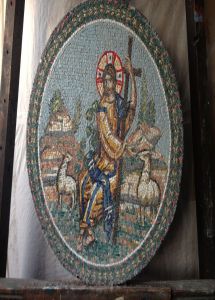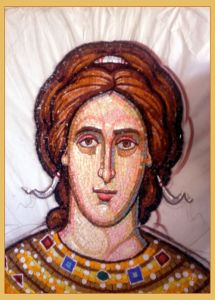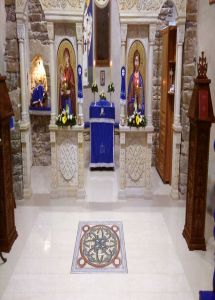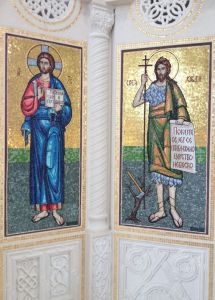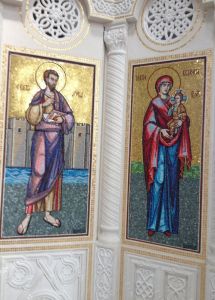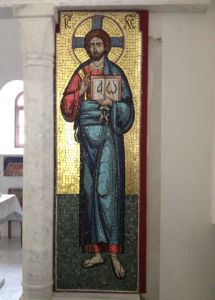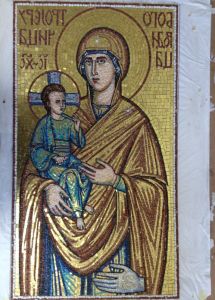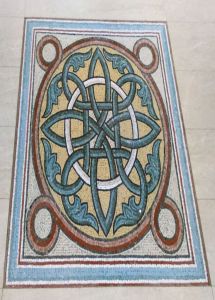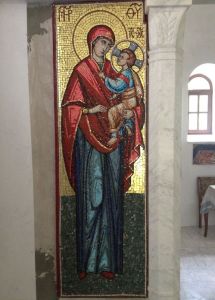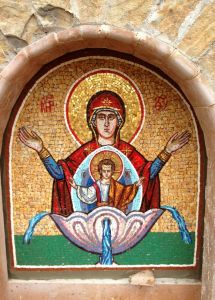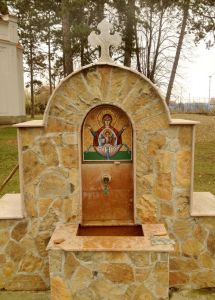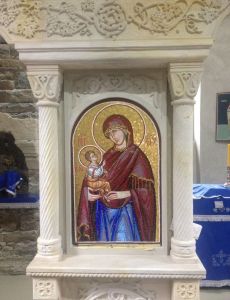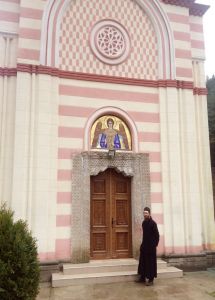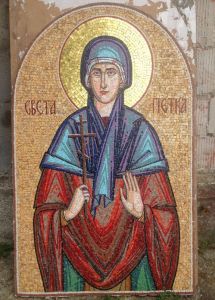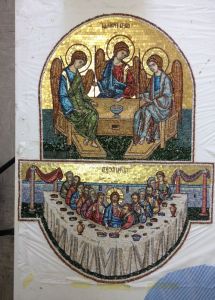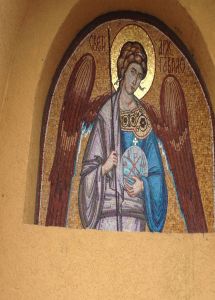Mosaic as a painting technique is one of the oldest techniques in the world. It can be made of natural stone, colored glass, and ceramic. Mosaic was originally constructed by direct placing and assembling individual modules (called: tesserae) onto the supporting surface at the site of installation either in the interior or in the exterior. At that time, mosaic plaster was used as a adhesive and it was made of slaked lime on a previously prepared surface, whereas today, thanks to new technologies, mosaic is inversely assembled typically on a drawing made on paper by gluing tesserae, after which the completed mosaic is cast in concrete, or, more and more frequently, in lighter, acrylic-based materials. Mosaic is definitely the most long-lasting painting technique, which results in the fact that it is a popular technique even today. Naturally, its longevity is not the only reason of its popularity, but its magnificence in the first place. Glitter of glass tesserae, their twinkling, vivid coloring and luxurious impression images leave have ensured the never-fading glory mosaic has in fine arts.
There are several types of mosaic based on the style of its construction:
Opus tesalatum
(Latin name for Roman mosaic which consists of small, roughly square-shaped modules of the same size of about 5 mm. Typically, tesalatum is made of natural stone.
Opus vermiculatum
(This is a type of mosaic whose name literally means ‘vermiform’, which suggests oblong shape of the tesserae. It is characterized by meticulous construction with emphasis on craftsmanship and imitation of brush painting, as well as its contrasting tones with numerous details and coloring values. This technique dates back to Hellenism, while it was particularly developed in Rome. This kind of mosaic contains in its construction “opus tesalatum” technique as well, primarily in the background area.)
Opus sectile
(This term refers to mosaics assembled of bigger parts of stone that are pieced together and look similar to what is nowadays known as the technique of collage. For instance, the whole lower arm on a human figure can be represented by a single part of stone shaped in the form of a lower arm. This type of construction is often present in modern mosaic art today. )
Later, in Hellenistic era, mosaics became more complex, with disparate coloristic values, while figurative compositions appeared as motifs more and more frequently. In the Roman period, mosaic as an art technique flourished. Besides fresco painting, mosaic became the most popular technique. It was used for decorating floors, walls, arches and numerous other places in representative objects, private villas and temples. The most popular motifs of mosaics in the Roman period were ornaments, portraits, figurative compositions, animals, as well as motifs from everyday life such as feasts, still life etc. In this period, mosaic art flourished both in technical skill and craftsmanship.In terms of style, Roman mosaics are realistic in representing motifs. In Byzantine art, which is directly derived from Roman or, to be more precise, late Roman art, mosaic plays a very important role, primarily in decorating temples where icons of saints and evangelical events were depicted. Unlike Roman mosaic art, background of mosaics in Byzantium consisted of square-shaped gilded glass tesserae that suggested eternity of heavenly kingdom. These mosaics were typically constructed in “opus tesalatum” and “opus vermikulatum” style with insistence upon imitation of brush painting. Nowadays, neo-Byzantine mosaics are still made mostly for the purpose of decorating churches, but unlike the earlier times when they were constructed by direct placing of tesserae at the site of installation, new technologies enable artists to produce mosaics in a studio and then send them to their final location for installation.
Authorial Work:
In my creative and artistic work, I have been making mosaics primarily with sacral and religious but also secular motifs since I was a student. Working on numerous authorial projects, I have always tried to give a personal touch to my own creations, constantly having in mind not to break the canonic rules of the Byzantine style while producing religious works of art, and I have also never copied already existing icons and artistic compositions unless it was necessary for a particular reason. I have constructed my own mosaics by using both direct method of placing tesserae, and the inverse method of assembling them on a drawing, the latter being predominant in my work, especially for big compositions. My personal preference in terms of expression and sensibility are mosaics that require meticulous assembling of tiny tesserae with much detail, which are mostly constructed in “opus vermiculatum” style.
I usually make my mosaics of glass smalti from Venice as well as natural stone, occasionally combining the two materials. I cast my works of art in light Italian two-component adhesive that gives the mosaic flexibility and longevity, while I use rabitz plastic mesh netting for reinforcement.
Apart from constructing big mosaic compositions in large formats, I also create miniature mosaics. Even though my work is mostly based on religious art, I have acquired great experience in decorating luxurious objects with mosaic such as swimming pools or other places both in the exterior and the interior. Moreover, I also have experience in creating relief mosaics.
I insist on precise and accurate drawing with complementary coloring and high contrast doing my best to, as far as my abilities allow me, make constant progress in using visual elements.


